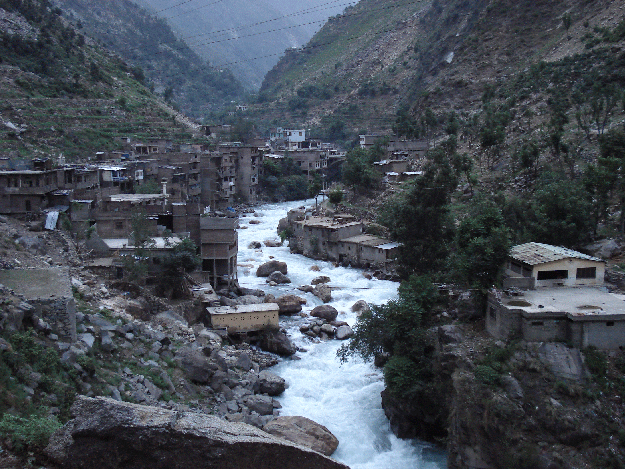 Settlements along the Indus River in Pakistan, PC: Birendra Bajracharya
Settlements along the Indus River in Pakistan, PC: Birendra Bajracharya
The Hisaar Foundation, a prominent NGO working on water security in Pakistan, has organized the launching event of the Unites States Institute for Peace report “Contested Waters. Subnational Scale Water Conflict in Pakistan”, hosted by the Zulfikar Ali Bhutto Institute of Science and Technology (ZSABIST), Karachi.
The publication, authored by Daanish Mustafa, Giovanna Gioli, Milan Karner and Imran Khan, is the first comprehensive publication on the topic. It reviews the evidence for, and politics around, water-related conflict at local, provincial, and interprovincial scales in Pakistan.
 A picture from the launch of the report.
A picture from the launch of the report.
The report comprises of five case studies (Full report available here: https://www.usip.org/publications/2017/04/contested-waters-subnational-scale-water-conflict-pakistan) on interprovincial water conflict , floods, irrigation conflicts in Punjab, farmer-fisherfolk Conflict in Sindh’s Manchar Lake, and conflict over domestic water supply in Karachi.
The key messages of the report are as follows:
- In Pakistan, conflict over water distribution between provinces (upper versus lower riparian) is driven by structural constraints inherent to upstream-downstream dynamics and by the specific geophysical characteristics of the Indus basin system.
- The controversy over large dams is less about water per se than about competing visions of development, and about the scale (national versus local and regional) at which politics are practiced and problems defined.
- Since the inception of the Indus basin irrigation system, what places get flooded and when has been a function of human decisions and power relations and not an inevitable act of nature.
- Early warning and flood-proofing initiatives should be directed to the most highly exposed and vulnerable populations, instead of undifferentiated administrative units, to prevent the hazard from turning into a disaster.
- At the community level, water is more an instrument of conflict than a driver of conflict—that is, it is used as a weapon in conflicts about political allegiances, family, caste, etc. The state often serves as an enabler for more powerful actors, through acts of omission and commission.
- Development in Pakistan needs to take into account livelihoods not related to agriculture. Ill-conceived development around Manchar Lake to benefit agriculture destroyed an entire system of livelihood and fostered conflict between agriculturists and fisherfolk.
- The commodification of water in Karachi and other urban areas precipitates conflict along class, ethnic, and caste lines. People unable to afford high prices for water through tankers or suction pumps often engage in violent conflict to access water.
- Addressing water conflict requires acknowledging water’s politically and culturally mediated values and not just its economic value. Technocratic engineering engagement with water conflict is not enough; political engagement is also necessary.
- Water conflict is partly a manifestation of people’s attempt to claim legitimacy for their experiences within local environments against the encroachment of national scale imperatives.
The event was attended by water scholars, policy makers from the Sindh Irrigation Department, and student of SZABIST.
